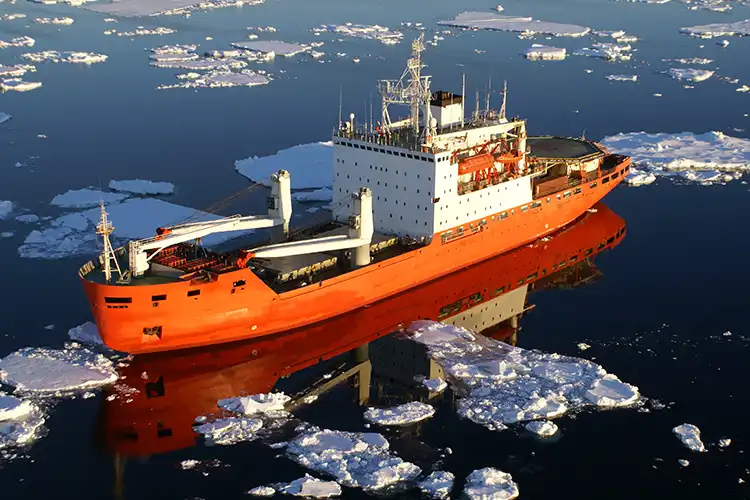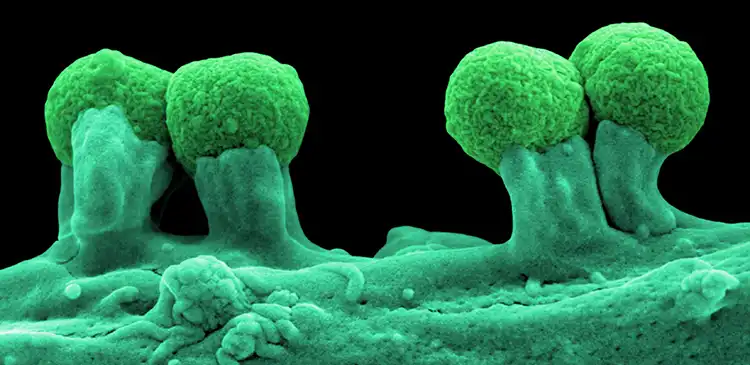
The search for novel microbes in Arctic ecosystems, known as bioprospecting, is yielding promising results for the development of new drugs
By
In January this year, the Norwegian Parliament approved a government plan to open a large part of its seabed to mining exploration. Around the same time, at the University of Helsinki in Finland, a team of scientists led by Päivi Tammela was analysing samples taken from microbes found in the Arctic sea, off Svalbard. These samples might, they hoped, contain previously undiscovered compounds that could one day become new drugs for dangerous bacteria. ‘Knowing what we do now,’ says Tammela, ‘I would say the deep ocean is a highly promising source of new discoveries.’
From these samples, Tammela and her colleagues have identified two new compounds that could be used to target a type of E. Coli that causes severe – and sometimes deadly – diarrhoea in children under five, especially in developing countries. Tammela, a professor of pharmaceutical biology at the university, explains that as antibiotics aren’t selective about the bacteria they target, they aren’t recommended for the treatment of intestinal infections caused by bacteria such as E. Coli. ‘You’re potentially killing all the beneficial microbiota in your gut, which may just make the situation worse. Nowadays, it’s generally better understood that taking multiple courses of antibiotics actually does a lot of harm, and can have really long-lasting effects.’ The other problem, she adds, is that the strain of E. Coli causing your infection could already be resistant to antibiotics.
Antimicrobial resistance is already a global crisis. It is currently responsible for 1.27 million deaths every year and, unless urgent action is taken, this number could reach 10 million by 2050. While the global overuse and misuse of antibiotics, especially in agriculture, is a major factor in rising resistance, the crisis has been compounded by very few new antibiotic discoveries in recent decades.
Check out some more microbe scientific discoveries…
In an attempt to tackle the rising problem of antibiotic resistance, Tammela’s research has focused on compounds with antivirulence effects. Unlike traditional antibiotics that kill or inhibit the growth of bacteria, antivirulence drugs effectively disarm them. ‘When you expose a bacterial population to an antibiotic that kills them, there’s always a few with mutations that survive and start a new, resistant population,’ Tammela explains. ‘Because antivirulence compounds are not intended to kill a bacterium, we avoid this selective pressure that causes it to evolve in a certain direction. We are just preventing it from causing disease.’

It will be a long time before we find out whether these two, newly-discovered compounds can be used to develop new antivirulence drugs, but Tammela’s research has made it easier for other scientists searching for solutions to the antimicrobial crisis in the deep ocean. She and her colleagues are the first to trial a new, time-saving process that analyses hundreds of unknown compounds simultaneously and in greater detail than commonly used methods. ‘We are constantly looking for new chemical compounds that could be used as drugs or pharmaceuticals,’ says Tammela. ‘Our key message from our paper is that it really pays off to use more advanced technology to look at these samples.’
So far, 70 per cent of all licenced antibiotics have been derived from bacteria in the soil. We’re only just starting to look for useful products that can be developed from microscopic life – an activity known as bioprospecting – in Earth’s other environments, from our forests to the ocean floor. Yet scientists are already concerned that human activities, such as the development of deep sea mining, could disrupt ecosystems and organisms that are yet to be discovered.




